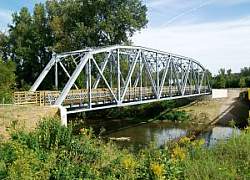
Treatment
Both urban and rural water infrastructure face complex challenges, but investing in new or modernizing infrastructure will alleviate some of the biggest.
The American Society of Civil Engineers (ASCE) graded the US water infrastructure a D in 2021. In addition to consistent water main breaks which result in a loss of 2 trillion gallons of treated drinking water each year, there is also increased risk to lead contamination as there are an estimated 6-10 million lead service lines still in use.
In addition to these concerns, water scarcity continues to cause issues in some parts of the country, particulary the western US. Wastewater treatment also has a number of issues with 15% of the country's wastewater treatment plants in poor condition. All of this has been exasberated by the continual buget shortfalls to the point significant investment is needed over hte next 20 years to upgrade and maintain the failing water infrastructure.
Hot-dip galvanized steel is used throughout the water infrastructure system, but increased use can provide durable, long-lasting corrosion resistance. By reducing maintenance needs, galvanized steel frees up time and money to decidate to improving additional water infrastructure rather than on applying bandaids to exit
Treatment Components
Anchor Bolts |
Barriers |
Beams |
Buildings |
Catwalks |
Clarifiers |
Columns |
Fasteners |
Fencing |
Filters |
Gates |
Grating |
Ladders/Stairways |
Lighting |
Platforms |
Piping |
Pipe Supports |
Pump Stations |
Railings |
Ramps |
Reinforcing Steel |
Signage |
Stairways |
Storm Drains |










